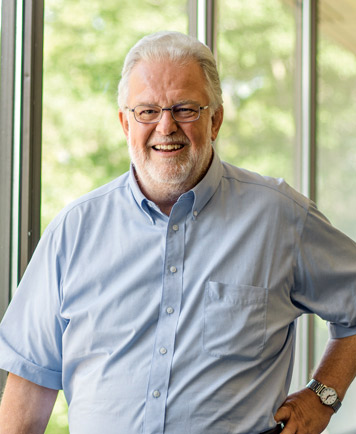 When David Whiteman, MD, asked a physician colleague at Shire Pharmaceuticals in Lexington to take a look at his painful foot, the response was immediate: get to a hospital. Dr. Whiteman, 64, has hereditary lymphedema type 2, which can produce spontaneous blisters, and type 2 diabetes, making him vulnerable for foot infections. On that day last February, the pediatrician had a raging infection and was at risk for losing his foot. At the Emerson Emergency Department (ED), astute, skilled clinicians moved quickly. Thanks to Scott Paparello, DO, infectious disease specialist, Sandra Weakland, DPM, podiatric surgeon, and the Emerson Center for Advanced Wound Care, Dr. Whiteman is walking on a healthy foot.
When David Whiteman, MD, asked a physician colleague at Shire Pharmaceuticals in Lexington to take a look at his painful foot, the response was immediate: get to a hospital. Dr. Whiteman, 64, has hereditary lymphedema type 2, which can produce spontaneous blisters, and type 2 diabetes, making him vulnerable for foot infections. On that day last February, the pediatrician had a raging infection and was at risk for losing his foot. At the Emerson Emergency Department (ED), astute, skilled clinicians moved quickly. Thanks to Scott Paparello, DO, infectious disease specialist, Sandra Weakland, DPM, podiatric surgeon, and the Emerson Center for Advanced Wound Care, Dr. Whiteman is walking on a healthy foot.
I suspected my foot was infected, but I needed it to be reinforced. Because I previously worked at the Harvard hospitals, my first inclination was to go downtown. My colleagues said, “No, go to Emerson; you’ll be well taken care of there.” So I drove myself from Lexington to Emerson — not the smartest thing to do, because I wasn’t aware of how sick I was.
While I was sitting in the ED waiting area, the triage nurse walked by to speak with another patient, looked at me and recognized the condition I was in. She took me into a room, and a blood test was quickly performed. I had a white cell count of 21,000; anything over 10,000 is of concern. I had sepsis [system-wide infection] and was admitted to Emerson.
Dr. Michael Soliman, my hospitalist, saw that the infection was spreading throughout my foot. He asked Dr. Paparello to come take a look, and he put me on daptomycin, which is a heavy-duty antibiotic. Dr. Paparello remained involved with my care while I was an inpatient and at Emerson’s wound center.
I was on Wheeler 5 at Emerson for ten days because they were worried about my white cell counts. Dr. David Handin served as my hospitalist. The care was very good, and the nursing staff was fantastic. What I appreciated was that I had a small team of people taking care of me who talked with each other regularly, cooperated with each other and otherwise left me alone.
Dr. Weakland took me to the operating room twice to debride the infection, which had gotten into the joint of my big toe and midfoot. She cut away bone and soft tissue and was successful at limiting the damage from the infection. Once she was sure my wound was healing, I was discharged and put on bed rest for two months. The concern was that, if I put weight on my foot, it would fracture.
From there, the Emerson wound care center became a second home. I went every other day for dressing changes and for the staff to assess and treat the wound. They started me on a wound-vac system, which helps speed healing, and I then had 40 treatments in the hyperbaric oxygen chamber to increase oxygenation to the extremities and wound. Finally, they used a skin substitute called EpiCord, which further promotes healing. There is no question they used an aggressive approach.
Emerson Home Care came to the house regularly. They were kind and helpful, and they kept me functioning. I lead a research group at Shire, and I was able to work while on bed rest, getting paperwork done and participating in phone conferences.
In May, my treatment was complete, and today I am walking on a healthy foot. My ongoing care includes seeing Dr. Weakland regularly, because my feet continue to be a concern. She will provide any preventive care that I need. She saved my toe, and probably my foot.
I didn’t know Emerson before I drove to the ED that day. Our permanent home is in Cape Elizabeth, Maine, and we stay in an apartment in Lexington during the week. I was impressed with everyone there and am especially grateful to the nurse who quickly realized how sick I was, because I did not. Looking back, if treatment had been delayed even an hour, I could have been in much bigger trouble.

